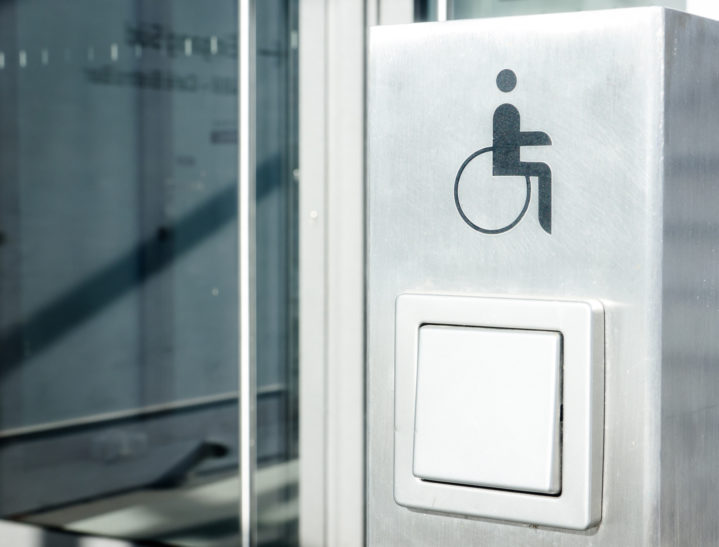One of the simplest and best indicators of ADA access for a truly accessible shop or office is whether or not people with disabilities can open the front door. If entrances have heavy doors that manually swing out, a person with mobility limitations will struggle to independently pull the door open to go inside. This is not only a disadvantage to the customer with disabilities, but it is also a disadvantage for the business, which has essentially excluded a significant population of potential customers and revenue.
Many businesses have improved ADA access and made their entrances more accessible by installing automatic doors that are motion sensitive, infrared activated, or connected to an activation switch. Here is a basic list of issues and requirements for ADA approved entrances.
Besides installing high-tech entrance access, there are two easier and less expensive solutions that business could consider in the interim:
- Here is a guide for how to measure and adjust the force, resistance, and swing speed of doors, to make them “lighter” and easier to open. If this is the type of adjustment your business chooses to make, be sure the handles on the doors are lower and easy to grip from a sitting position.
- If you have employees that are stationed close to the front entrance, make sure the front doors are glass or some other clear material. Then ensure that those employees are trained to interact and assist customers with disabilities in an appropriate manner. If they are attentive to people who are approaching the entrance, they can hold the door and offer assistance.
As businesses consider creative options for ADA access and entrance accessibility, they will find that they are also opening doors of opportunity to partner with people with disabilities to promote equality and awareness of ADA access in the community.

